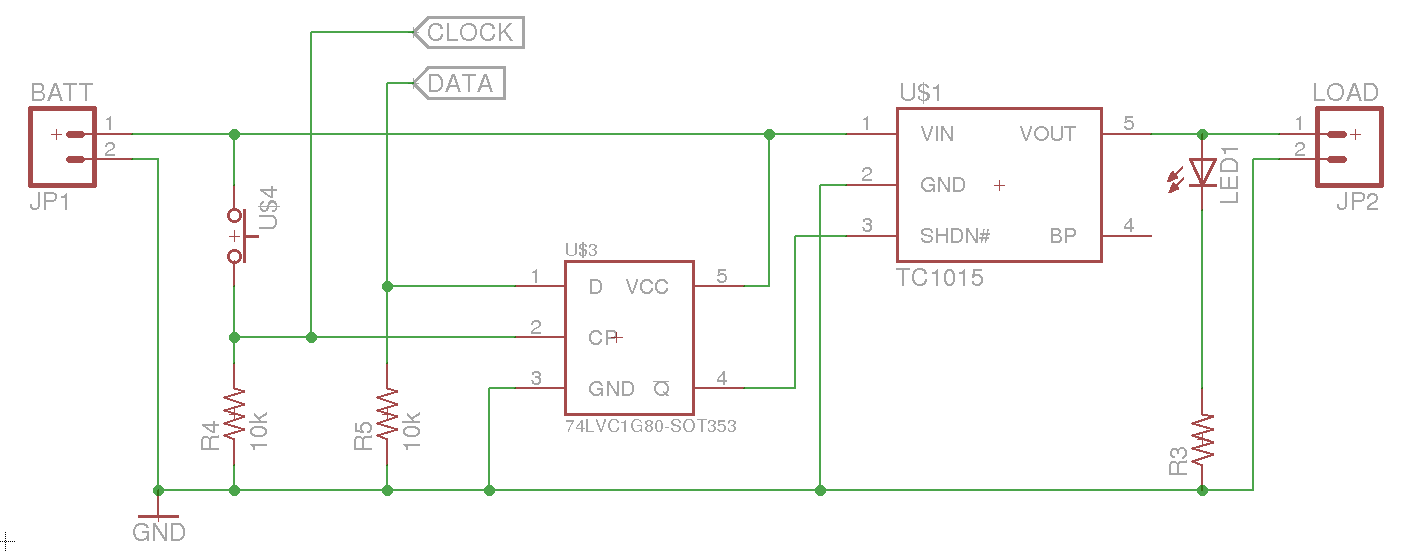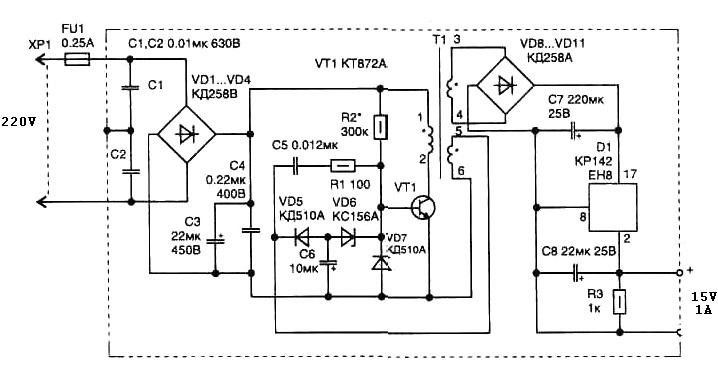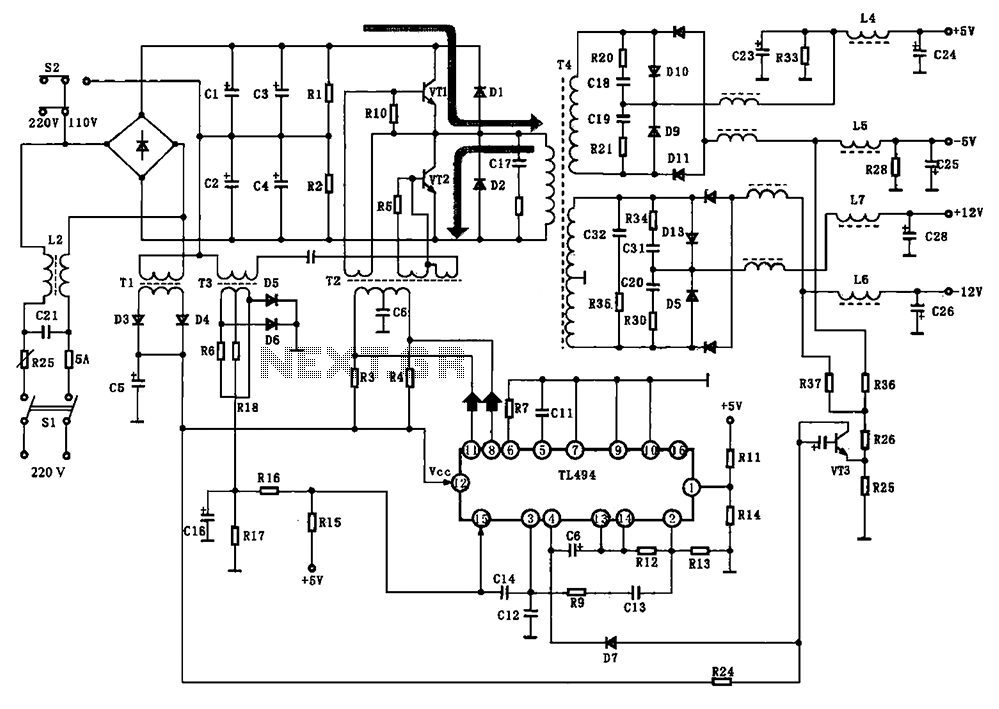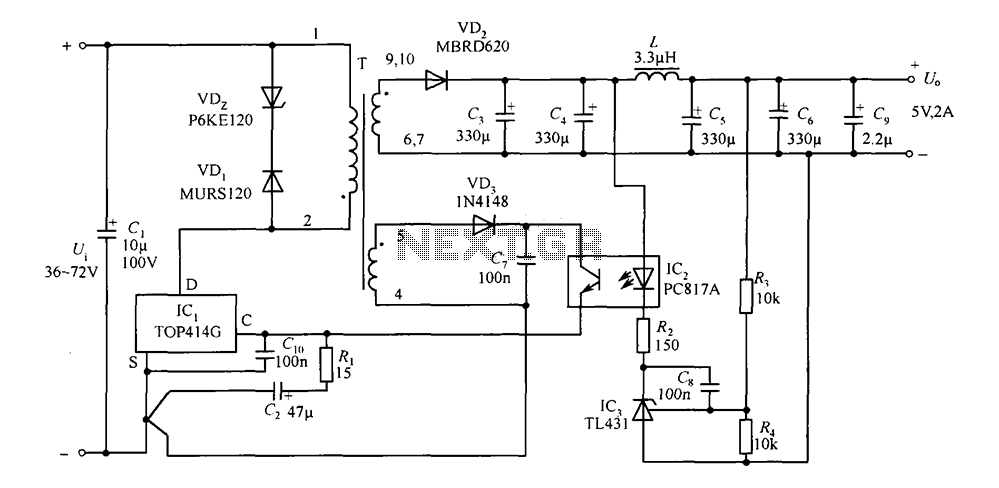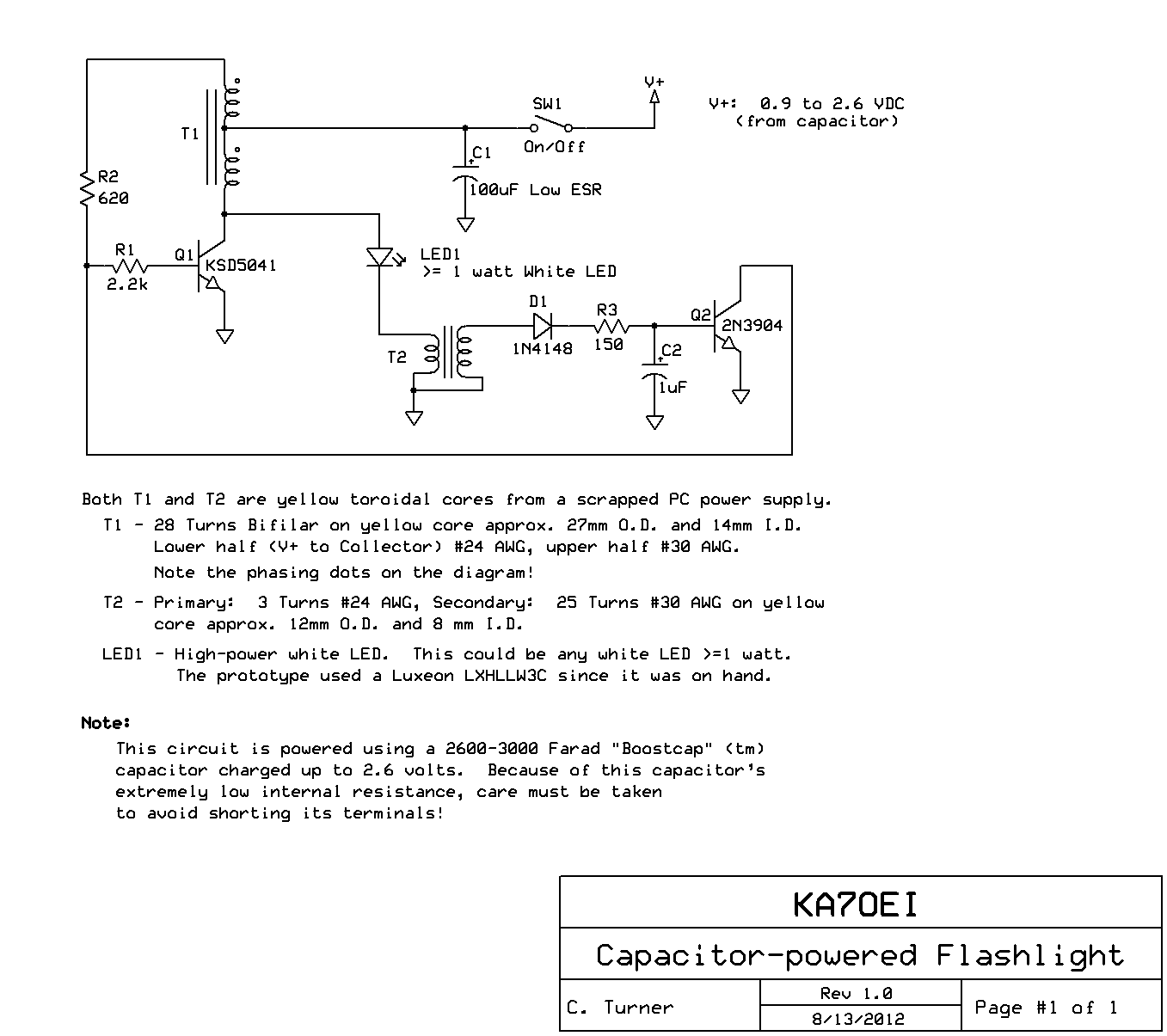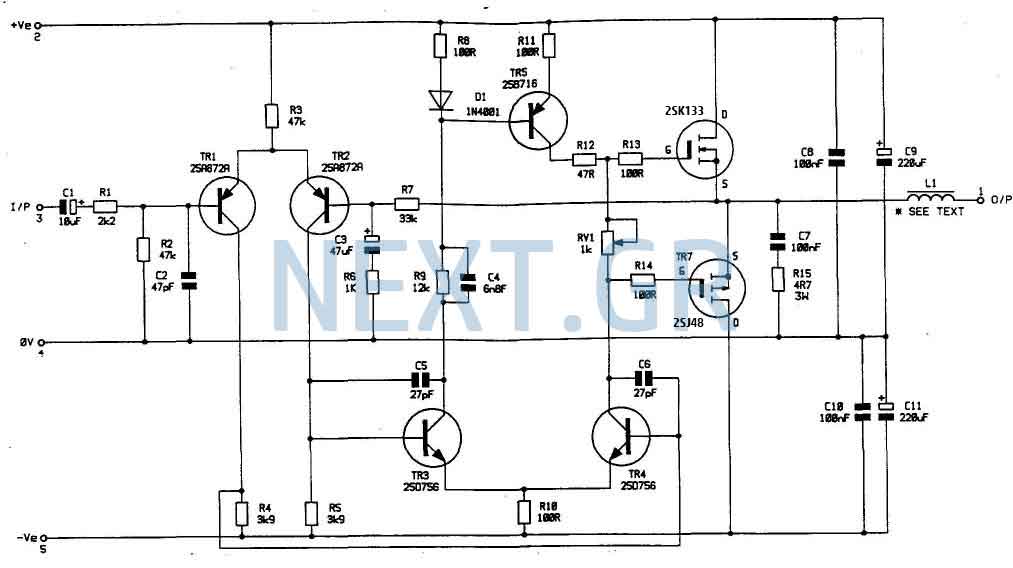
Transformerless Power Supply
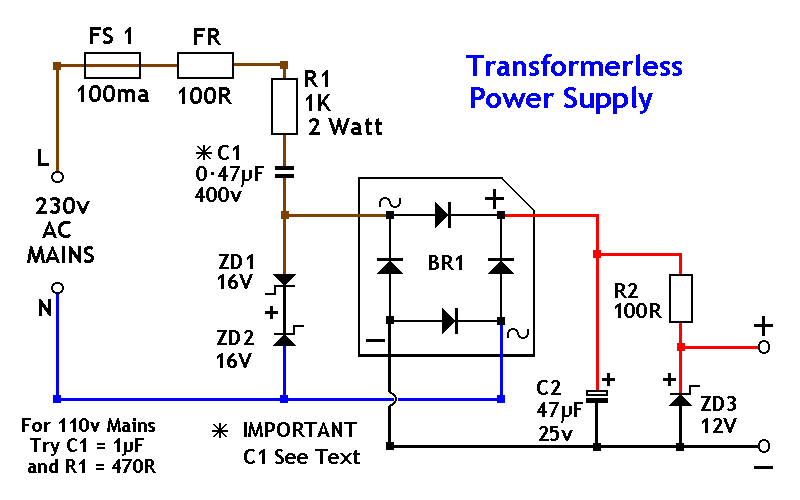
A power supply project that operates without a traditional transformer, potentially saving costs but also presenting lethal voltages at the output terminals. This project should not be attempted by beginners due to the electric shock hazard. In the UK, the neutral wire is earthed at the power station, creating a risk if the "Live" wire is touched, as it can form a conductive path between Live and Neutral. The output of this power supply circuit appears to sit at 12V with respect to the other terminal, but it is actually 12V above earth potential. If a component fails, either terminal could become a shock hazard. This project is intended for those experienced in handling such risks. Although mains equipment can consume significant current, control circuits typically require only a few milliamps. The low voltage power supply is often the most substantial part of the construction and a considerable portion of the cost. This circuit can supply up to approximately 20mA at 12 volts using capacitive reactance instead of resistance, generating minimal heat while drawing about 30mA AC. It is essential to use a fuse or fusible resistor for safety. The provided values are guidelines, with ample power available for timers, light-operated switches, and temperature controllers, especially when using an optical isolator as the output device (e.g., MOC 3010/3020). If a relay is necessary, it should have a mains voltage coil and be switched using the optical isolator. C1 should be a suppressor type capacitor, designed for direct connection across the incoming mains supply, typically marked with various safety standards logos. For higher current needs, a larger capacitor value or parallel capacitors can be used, but caution must be taken regarding power consumption. The low voltage AC is supplied by ZD1 and ZD2, and the bridge rectifier can be any small type or four separate diodes. R2 and ZD3 may be replaced with a 78 Series regulator, with full-sized models or smaller 100mA versions available in TO-92 cases. Many small circuits can operate with an unregulated supply, and the zener diodes can be altered for different output voltages. While suggestions for a 110V version exist, experimentation is necessary. The circuit was designed for compact power supply needs of CMOS logic circuits requiring only a few milliamps to control mains equipment through an optically isolated triac. For currents exceeding 20mA, increasing C1 to 0.68uF or 1uF can yield up to approximately 40mA. However, suppressor type capacitors are larger and more costly than regular capacitors, and higher currents necessitate higher wattage resistors and zener diodes. Exceeding about 40mA compromises the compact and economical nature of the circuit, making a transformer a more sensible choice.
This power supply circuit is particularly notable for its use of capacitive reactance, which allows for a compact design that minimizes heat generation. The circuit's ability to provide a stable 12V output while maintaining a low current draw makes it suitable for powering low-power logic circuits. The inclusion of optical isolators enhances safety by providing electrical isolation between the control circuit and the mains voltage, effectively reducing the risk of electric shock.
The use of a suppressor type capacitor (C1) directly across the mains supply is critical for filtering out high-frequency noise, ensuring stable operation of the power supply. The zener diodes (ZD1, ZD2) serve to regulate the output voltage and protect the circuit from voltage spikes, while the bridge rectifier converts the AC voltage to DC, making it suitable for powering electronic components.
For applications requiring higher current capacity, careful selection of components is necessary to ensure they can handle the increased load without overheating or failing. This project emphasizes the importance of safety precautions, such as the use of fuses, and the necessity for a thorough understanding of electrical principles before attempting to construct the circuit. The design's flexibility allows for modifications, such as adjusting the output voltage by changing the zener diode values, which can cater to a variety of low-power applications.
In summary, this power supply project represents a unique approach to providing low-voltage power without the need for a transformer, making it an economical solution for specific electronic applications, while also highlighting the inherent risks involved in working with mains voltage.A power supply project without using a power supply. This can save the expense of buying a transformer, but presents potentially lethal voltages at the output terminals. Under no circumstances should a beginner attempt to build such a project. Electric Shock Hazard. In the UK, the neutral wire is connected to earth at the power station. If you touch the "Live" wire, then depending on how well earthed you are, you form a conductive path between Live and Neutral. DO NOT TOUCH the output of this power supply. Whilst the output of this circuit sits innocently at 12V with respect to (wrt) the other terminal, it is also 12V above earth potential. Should a component fail then either terminal will become a potential shock hazard. If you are not experienced in dealing with it, then leave this project alone. Although Mains equipment can itself consume a lot of current, the circuits we build to control it, usually only require a few milliamps.
Yet the low voltage power supply is frequently the largest part of the construction and a sizeable portion of the cost. This circuit will supply up to about 20ma at 12 volts. It uses capacitive reactance instead of resistance; and it doesn`t generate very much heat. The circuit draws about 30ma AC. Always use a fuse and/or a fusible resistor to be on the safe side. The values given are only a guide. There should be more than enough power available for timers, light operated switches, temperature controllers etc, provided that you use an optical isolator as your circuit`s output device.
(E. g. MOC 3010/3020) If a relay is unavoidable, use one with a mains voltage coil and switch the coil using the optical isolator. C1 should be of the `suppressor type`; made to be connected directly across the incoming Mains Supply.
They are generally covered with the logos of several different Safety Standards Authorities. If you need more current, use a larger value capacitor; or put two in parallel; but be careful of what you are doing to the Watts. The low voltage `AC` is supplied by ZD1 and ZD2. The bridge rectifier can be any of the small `Round`, `In-line`, or `DIL` types; or you could use four separate diodes.
If you want to, you can replace R2 and ZD3 with a 78 Series regulator. The full sized ones will work; but if space is tight, there are some small 100ma versions available in TO 92 type cases. They look like a BC 547. It is also worth noting that many small circuits will work with an unregulated supply. You can, of course, alter any or all of the Zenner diodes in order to produce a different output voltage.
As for the mains voltage, the suggestion regarding the 110v version is just that, a suggestion. I haven`t built it, so be prepared to experiment a little. I get a lot of emails asking if this power supply can be modified to provide currents of anything up to 50 amps. It cannot. The circuit was designed to provide a cheap compact power supply for Cmos logic circuits that require only a few milliamps.
The logic circuits were then used to control mains equipment (fans, lights, heaters etc. ) through an optically isolated triac. If more than 20mA is required it is possible to increase C1 to 0. 68uF or 1uF and thus obtain a current of up to about 40mA. But `suppressor type` capacitors are relatively big and more expensive than regular capacitors; and increasing the current means that higher wattage resistors and zener diodes are required. If you try to produce more than about 40mA the circuit will no longer be cheap and compact, and it simply makes more sense to use a transformer.
🔗 External reference
This power supply circuit is particularly notable for its use of capacitive reactance, which allows for a compact design that minimizes heat generation. The circuit's ability to provide a stable 12V output while maintaining a low current draw makes it suitable for powering low-power logic circuits. The inclusion of optical isolators enhances safety by providing electrical isolation between the control circuit and the mains voltage, effectively reducing the risk of electric shock.
The use of a suppressor type capacitor (C1) directly across the mains supply is critical for filtering out high-frequency noise, ensuring stable operation of the power supply. The zener diodes (ZD1, ZD2) serve to regulate the output voltage and protect the circuit from voltage spikes, while the bridge rectifier converts the AC voltage to DC, making it suitable for powering electronic components.
For applications requiring higher current capacity, careful selection of components is necessary to ensure they can handle the increased load without overheating or failing. This project emphasizes the importance of safety precautions, such as the use of fuses, and the necessity for a thorough understanding of electrical principles before attempting to construct the circuit. The design's flexibility allows for modifications, such as adjusting the output voltage by changing the zener diode values, which can cater to a variety of low-power applications.
In summary, this power supply project represents a unique approach to providing low-voltage power without the need for a transformer, making it an economical solution for specific electronic applications, while also highlighting the inherent risks involved in working with mains voltage.A power supply project without using a power supply. This can save the expense of buying a transformer, but presents potentially lethal voltages at the output terminals. Under no circumstances should a beginner attempt to build such a project. Electric Shock Hazard. In the UK, the neutral wire is connected to earth at the power station. If you touch the "Live" wire, then depending on how well earthed you are, you form a conductive path between Live and Neutral. DO NOT TOUCH the output of this power supply. Whilst the output of this circuit sits innocently at 12V with respect to (wrt) the other terminal, it is also 12V above earth potential. Should a component fail then either terminal will become a potential shock hazard. If you are not experienced in dealing with it, then leave this project alone. Although Mains equipment can itself consume a lot of current, the circuits we build to control it, usually only require a few milliamps.
Yet the low voltage power supply is frequently the largest part of the construction and a sizeable portion of the cost. This circuit will supply up to about 20ma at 12 volts. It uses capacitive reactance instead of resistance; and it doesn`t generate very much heat. The circuit draws about 30ma AC. Always use a fuse and/or a fusible resistor to be on the safe side. The values given are only a guide. There should be more than enough power available for timers, light operated switches, temperature controllers etc, provided that you use an optical isolator as your circuit`s output device.
(E. g. MOC 3010/3020) If a relay is unavoidable, use one with a mains voltage coil and switch the coil using the optical isolator. C1 should be of the `suppressor type`; made to be connected directly across the incoming Mains Supply.
They are generally covered with the logos of several different Safety Standards Authorities. If you need more current, use a larger value capacitor; or put two in parallel; but be careful of what you are doing to the Watts. The low voltage `AC` is supplied by ZD1 and ZD2. The bridge rectifier can be any of the small `Round`, `In-line`, or `DIL` types; or you could use four separate diodes.
If you want to, you can replace R2 and ZD3 with a 78 Series regulator. The full sized ones will work; but if space is tight, there are some small 100ma versions available in TO 92 type cases. They look like a BC 547. It is also worth noting that many small circuits will work with an unregulated supply. You can, of course, alter any or all of the Zenner diodes in order to produce a different output voltage.
As for the mains voltage, the suggestion regarding the 110v version is just that, a suggestion. I haven`t built it, so be prepared to experiment a little. I get a lot of emails asking if this power supply can be modified to provide currents of anything up to 50 amps. It cannot. The circuit was designed to provide a cheap compact power supply for Cmos logic circuits that require only a few milliamps.
The logic circuits were then used to control mains equipment (fans, lights, heaters etc. ) through an optically isolated triac. If more than 20mA is required it is possible to increase C1 to 0. 68uF or 1uF and thus obtain a current of up to about 40mA. But `suppressor type` capacitors are relatively big and more expensive than regular capacitors; and increasing the current means that higher wattage resistors and zener diodes are required. If you try to produce more than about 40mA the circuit will no longer be cheap and compact, and it simply makes more sense to use a transformer.
🔗 External reference
Warning: include(partials/cookie-banner.php): Failed to open stream: Permission denied in /var/www/html/nextgr/view-circuit.php on line 713
Warning: include(): Failed opening 'partials/cookie-banner.php' for inclusion (include_path='.:/usr/share/php') in /var/www/html/nextgr/view-circuit.php on line 713
